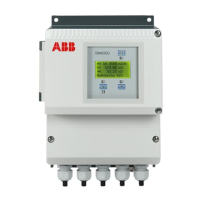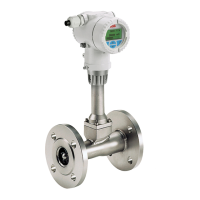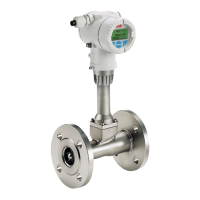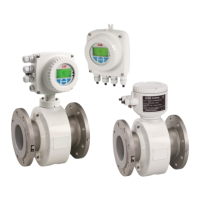52 FSM4000 ELECTROMAGNETIC FLOWMETER | OI/FSM4000-EN REV. E
… 7 Commissioning
Commissioning of FOUNDATION FIELDBUS® devices
For devices with a FOUNDATION Fieldbus, the settings of the DIP
switch must be checked prior to commissioning.
When integrating the unit in a process control system, a DD file
(device description) and a CFF file (common file format) are
required. The DD file contains the device description. The CFF
file is required for segment engineering. Engineering can be
performed online or offline. The DD and CFF files are available to
download from the ABB homepage http://www.abb.com/flow.
The DIP switches on the unit must be set correctly as follows:
• DIP switch 1 must be set to OFF.
• DIP switch 2 must also be set to OFF. Otherwise, the
hardware write protection and the process control
system prevent the unit from recording information.
The FOUNDATION Fieldbus interface for the device is compliant
with the standards FF-890/891 and FF-902/90. The transmitter
transmission signal is designed according to IEC 61158-2.
The device is registered with the FOUNDATION fieldbus. The
registration number is IT 027200.
Registration for the FOUNDATION fieldbus is recorded under
manufacturer ID 0x000320 and unit ID 0x0017.
Transmitter plug-in unit
DIP switch
Figure 52: Position of the DIP switches
Assigning of DIP switches
• DIP switch 1:
Releases the simulation of the AI function blocks.
• DIP switch 2:
Hardware write protection for write access via bus (locks
all blocks).
Bus address settings
The bus address is automatically allocated at the FF via LAS (link
active scheduler). For address detection, a unique number is
used (DEVICE_ID). This number is a combination of
manufacturer ID, device ID and device serial number.
Switch-on behavior
The behavior when switching on the unit corresponds to Draft
DIN IEC/65C/155/CDV of June 1996.
Information on voltage/current consumption
The mean current consumption of the device is 10 mA. The
voltage on the bus line must lie in the range of 9 to 32 V DC
Note
The upper limit of the current is electronically limited. In the
event of an error, the FDEfunction (Fault Disconnection
Electronic) integrated in the device makes sure that the current
consumption cannot exceed a maximum of 13 mA.
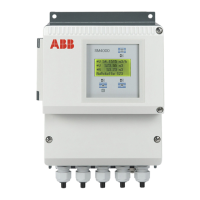
